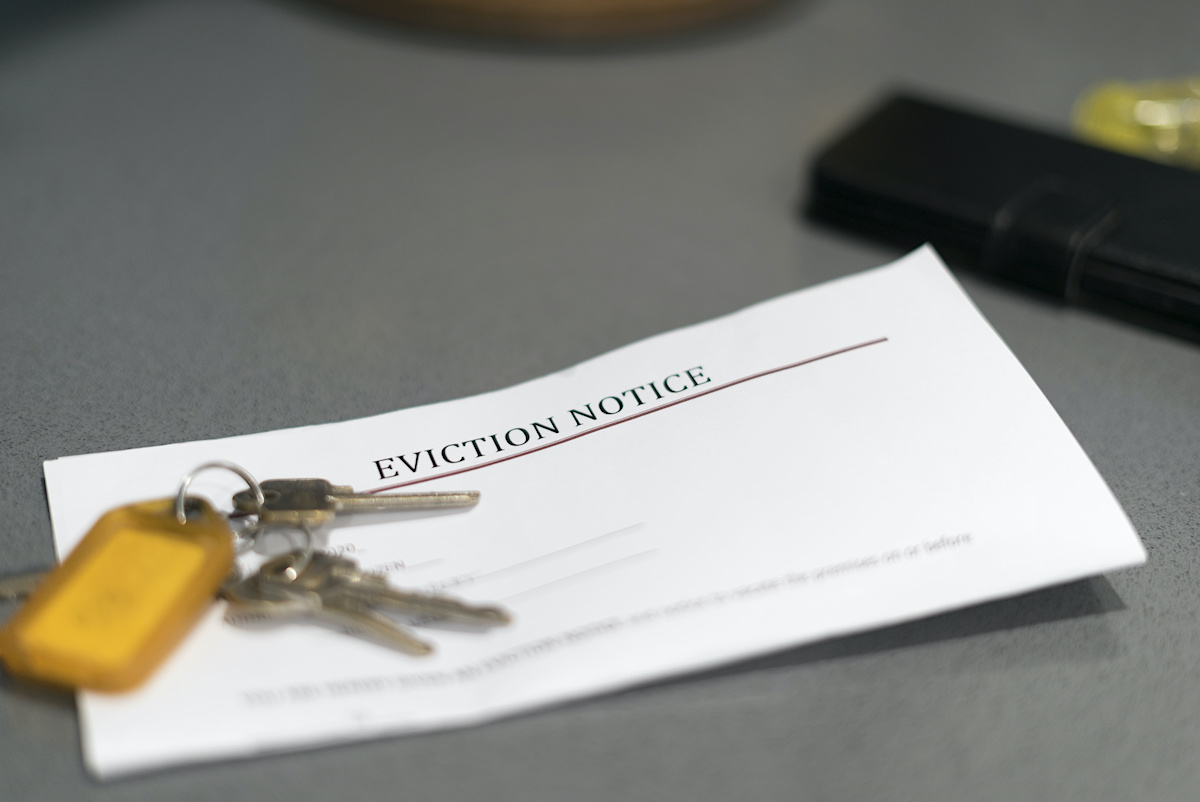
WASHINGTON (GA Recorder) — States, cities and counties that excelled at distributing emergency federal aid to renters struggling during the pandemic may soon be rewarded—with yet more cash.
Their new funding would be drawn from sluggish states like Georgia and localities that didn’t move as swiftly to help people facing eviction and homelessness, who were targeted for billions in assistance in relief legislation passed by Congress.
The potential redistribution comes during a year in which Americans who risked losing their housing looked to government for help and a federal eviction ban expired. Meanwhile, state and local leaders struggled to ramp up their rental relief programs—and now a major deadline looms.
The process for sorting out which states and cities may receive more federal rental aid money and which may see reductions begins Monday.
The slow distribution pace in Georgia has been labeled concerning in a report from the National Low Income Housing Coalition because of the state’s large renter population.
By the end of September, only 9% of the initial $552 million from Georgia’s Department of Community Affairs-administered Georgia Rental Assistance Program went to renters and landlords, far below the 30% threshold set by the Treasury Department.
In contrast, advocates say some states stand out for their speed in getting their federal money spent, like New Jersey, Virginia and North Carolina.
For slower-spending states like Georgia, Arizona, Ohio and Tennessee— it doesn’t necessarily mean they’ll see their housing funds taken away.
Underperformers
Monday is the deadline for underperforming localities — those that have obligated less than 65% of their funds — to submit a plan to the U.S. Treasury explaining how they’re fixing bottlenecks in getting that aid out the door.
In some places that have spent less than 30% of their federal rental aid, some rental assistance dollars may end up recaptured by the federal government and sent to states, cities and counties that have obligated at least 65% of their funds.
As much as $1.2 billion in unobligated funds could be taken back from underperforming state and local governments, according to the report from the National Low Income Housing Coalition.
But the organization estimated the amount of money that could be shifted around drops dramatically, to $257 million, if those governments have their improvement plans approved.
Georgia officials say they’re optimistic that recent progress in getting the money out more quickly – doubling the amount of relief delivered since late August – and other measures taken will help their plans to improve rental assistance be approved by federal officials.
Among the changes are allowing applicants to provide documents proving their eligibility at the outset, as well as a greater emphasis on advertising and working with local organizations to spread the word about the program.
Georgia has already implemented one of the housing coalition’s recommendations by removing a cap on how much assistance a household can receive, and extending the period when rent and utilities are covered from 12 to 18 months.
“Low-spending states that also have low average household payouts should consider increasing assistance to households, such as providing three months of current/future rent for all households receiving assistance,” the housing coalition report says.
The low income housing group also recommends that low-spending state programs redirect some of their money to successful local programs. In addition, the group suggests that the Treasury Department re-evaluate if states have received the right amount of funds so that the next round of the program can be better allocated.
Housing advocates say shifting some of those dollars may be a good thing. Every state received a minimum amount through the rental aid program, so smaller states with fewer renters received a disproportionate amount.
Some low-spending states have served relatively high shares of their cost-burdened tenants, according to the report: Vermont, for example, has only spent 13% of its federal aid but has served 16,043 renters, representing 49% of low-income cost-burdened households statewide.
And in some states, money could be reallocated from underperforming state agencies to cities like Atlanta and Henry County in Georgia that have done a better job of connecting with renters.
The process for determining which states and local governments will lose money — and how much — is likely to take several weeks.
Treasury officials will evaluate the program improvement plans from grantees that received some of the $25 billion that Congress initially approved in December 2020.
By removing some of the paperwork barriers and getting the funding out more quickly, the Georgia program stands a better chance of avoiding losing out on some of the funding that’s critical to keeping a roof over the heads of struggling renters, said Kimberly Skobba, associate professor of financial planning, housing and consumer economics at the University of Georgia.
“I think the problems with getting an application completed, lack of staffing capacity, the length of time to process, which is pretty long have all been barriers to success,” she said. “I would hope that when presented with a reasonable plan of action with some evidence that there’s progress in Georgia that the (Treasury Department) will reconsider taking away money. Because ultimately, that will hurt the people who need the funds the most.”
The money was sent to states and localities to provide quick relief to those facing potential eviction during the public health crisis. But getting that help from states and localities to renters and landlords was a slow process in most communities.
By the end of July, only $5 billion had been spent. Some jurisdictions struggled to set up brand-new programs to distribute those dollars or to add staffers to historically underfunded rental aid programs.
A slew of requirements to qualify for help also contributed to the slowdown.
Federal officials have urged states and localities to lift those paperwork burdens, and the places that have eased requirements have been the ones to show the most improvements in getting aid dollars out.
Just 40% of rental aid out the door
While those dollars are flowing faster than they were this spring, only 40% of the $25 billion initially approved for rental assistance had been distributed as of Sept. 30, according to Treasury data and analysis from the National Low Income Housing Coalition.
States, which received $17.7 billion of that funding, had spent $6.7 billion, or 38% of their allocations, by the end of September.
Local grantees had distributed $3.2 billion, or 60% of the $5.4 billion they received.
Treasury data through Sept. 30 shows seven states with expenditure ratios above 65%: New Jersey, New York, Illinois, Virginia, California, North Carolina, and Texas.
Meanwhile, 28% of grantees — including 32 states and 80 localities — have spent less than 30% by that September deadline.
But Treasury officials and housing advocates caution that not all of those underperforming programs will lose money. That’s because the Treasury Department outlined several ways for grantees to prevent or reduce any lost dollars.
One way is to prove by Nov. 15 that they have spent at least 30% of their rental aid dollars, or obligated at least 65%.
Data released by the Treasury Department shows how much states have spent, not how much they have obligated. But some states have shared that amount on their own. Georgia reports it has obligated nearly $47 million as of Nov. 8, which is still less than 9% of its $552 million federal allocation.
The September data from Treasury is likely a conservative estimate of which states fall into each category, said Sarah Gallagher, senior project director for the National Low Income Housing Coalition’s End Rental Arrears to Stop Evictions program.
State and local data compiled by Gallagher’s organization through Nov. 8 indicates at least 10 states have spent or obligated at least 65% of their funds, while 27 have approved or spent less than 30%.
States and localities also can reduce how much money could be shifted if their improvement plan is approved by the Treasury. Those plans are supposed to show that they’re incorporating recommended practices, such as making it easier for tenants to apply for funding.
Treasury officials declined to provide details ahead of Monday’s deadline on which states already had submitted improvement plans. Georgia’s Department of Community Affairs also did not respond to several inquires from the Georgia Recorder about the state of its plan.
Making ‘course corrections’
Gallagher said her group had urged Treasury officials to require the program improvement plans for underperforming states, describing Monday’s deadline for those reports as “an opportunity to make course corrections.”
The adjustments will look different from state to state.
The solution in some states may be to shift money from state coffers to local ones. While Georgia was at the bottom of the pack for distributing its state allocation, its local grantees did much better, according to the report.
Although Georgia’s largest metro areas have generally distributed money more efficiently, to eliminate confusion for applicants, the state program has been expanded so that all renters may apply directly to the state.
These rental assistance programs are especially important after the federal eviction moratorium expired on Sept. 1, Skobba said.
In the summer, there were already hundreds of thousands of Georgians behind on their rent. The rate of evictions in Georgia hasn’t reached the catastrophic level feared, but it could rise at any time, she said.
“Certainly evictions are taking place and it doesn’t mean that won’t change,” Skobba said. “Maybe the people are waiting to see what’s happening with the kind of rental assistance decision.”






